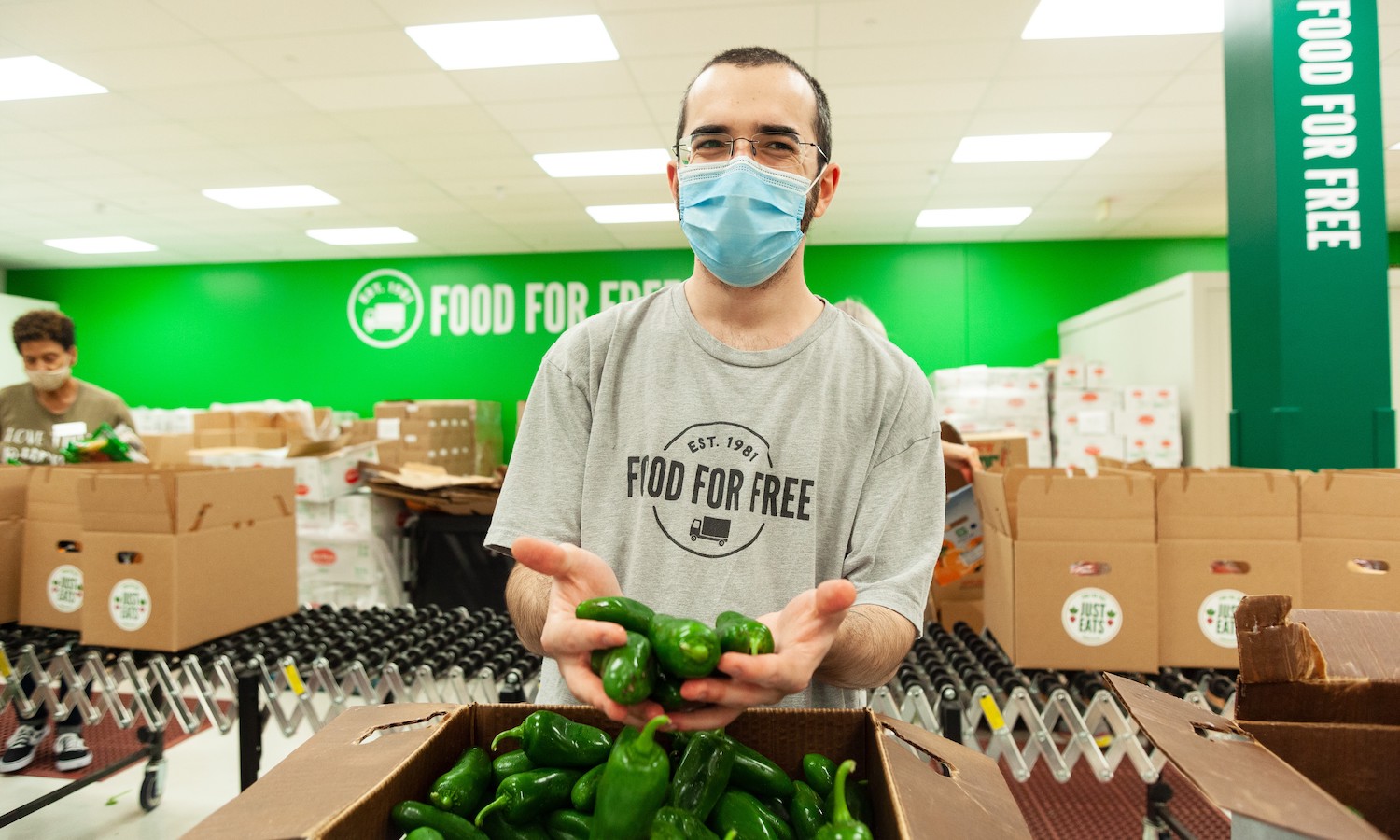Through its food delivery and school outreach, hunger relief organization Food For Free helps residents of the Greater Boston, Massachusetts area stay well fed.
Food For Free works with more than 100 organizations in 12 cities in and around Boston to get food to those in need. Celebrating its 40th anniversary, the organization distributed over six million pounds (2.7 million kilograms) of food in 2021, relying on a tightly knit network of volunteers and community partners.
In 2020, Food For Free launched the Just Eats grocery delivery program to meet the needs of local food pantries, many of whom don’t have consistent access to large-scale refrigeration. The organization’s solution is simple: deliver produce, which is less perishable and easier to distribute. “We’ve always believed everybody deserves access,” says Sasha Purpura, Food For Free’s CEO. “And we can do that most efficiently through partnering with others.”
During the early days of the COVID-19 pandemic, Food For Free sourced most of its food from the U.S. Department of Agriculture. As government support became less accessible, Food For Free began partnering with local providers like Boston Area Gleaners. The organization also works with local grocers, rescuing unsold food that would otherwise be discarded.
Purpura attributes Food For Free’s rapid growth to the organization’s knack for building relationships, both with food providers and with people in need. “The city approached us because we were getting food to food pantries, but there’s this population that are homebound. They live alone and cannot physically get to a food pantry,” Purpura tells Food Tank. To reach these groups, Food For Free launched a home delivery program, recruiting volunteer drivers to bring food to the hungry.
That initiative was particularly important during the height of pandemic restrictions, when many community members were stuck inside. Deliveries provided human connections, and Food For Free was immediately flooded with volunteers, eager to help their neighbors stay safe. “When you’re giving people food, you’re giving them more than just nutrition,” Purpura explains. “It’s letting all those people know in the first few months that we care about them.”
For many, Food For Free became an essential pandemic support system. One colleague, Purpura says, ran into a neighbor while wearing her Food For Free t-shirt. The neighbor asked if Purpura’s colleague knew the organization, then began crying. She explained that Food For Free had kept her from going hungry.
Food For Free also began stationing volunteers at schools during the pandemic, providing free lunch to families and students. “We’ve always believed you meet people where they are,” Purpura says. “Schools are an incredible way to reach not only students, but also their families.”
In 2021, Food For Free began distributing PEX cards, similar to prepaid debit cards that can be refilled each month, to Boston-area schools. It’s a new domain for the organization, and Purpura is excited for what it may bring. “When we get new resources, new things happen,” Purpura says.
In the past, Food For Free relied on several community partners to host its programs. But they recently jumped at the chance to move into a central office. “We have a home where all of us can come together,” Purpura says.
Reflecting on the challenges of the pandemic and the promises of the future, Purpura sees endless possibilities. “I think because we’re so embedded in the community, and so tuned into everything going on around us, we are able to very quickly shift as needed, and just do what needs to be done.”
Photo courtesy of Food for Free











